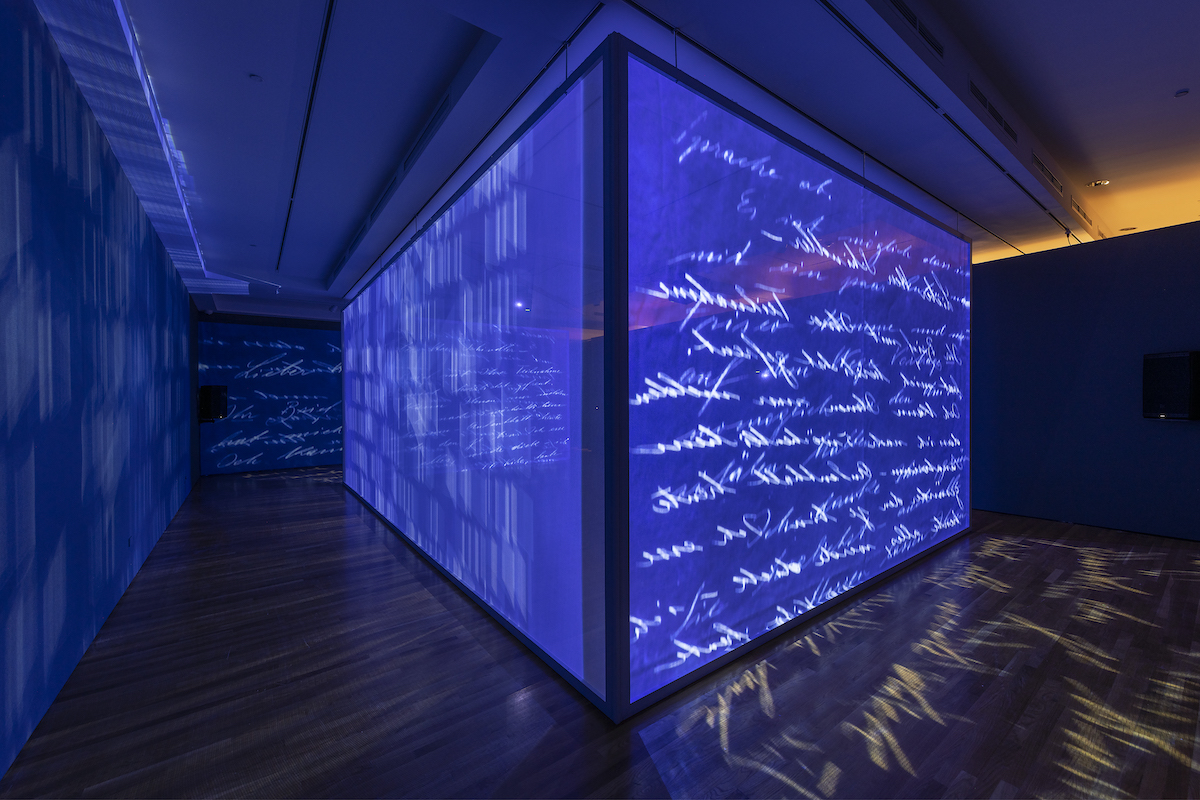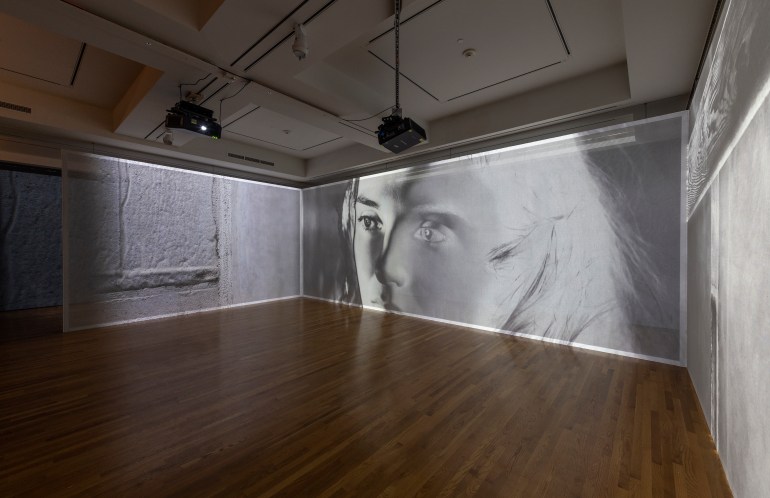UCSB AD&A Museum Presents ‘835 Kings Road’
Mona Kuhn’s Multimedia Installation Reimagines L.A.’s Schindler House

In 835 Kings Road, a new exhibition at the UCSB Art, Design, & Architecture Museum, photographer Mona Kuhn has teamed with composer Boris Salchow, UCSB Associate Professor of Theater Design Greg Mitchell, and graphic designer Wonho Lee to create an immersive three-sided motion picture installation that explores the inner life and emotional legacy of famed modernist architect R.M. Schindler. The show takes its title from the West Hollywood street address of Schindler’s most famous creation, the “Schindler House,” an essential work in the emergent canon of modern architecture that celebrates its 100th anniversary this year.
Inspired by conversations with AD&A curator Silvia Perea and through access to the museum’s Architecture and Design Collection, Kuhn discovered previously unpublished documents from Schindler’s correspondence indicating that he had abandoned a potential romantic relationship around the time that the house was under construction. A handwritten note to this woman, who remains anonymous, expressed resignation in the face of what Schindler perceived as insurmountable obstacles to their affair. Schindler encourages the woman to accept that sometimes in life, dreams don’t come true.

Kuhn, who has built an international reputation around her sensitive and aesthetically nuanced figure photography, began by assembling an intricately layered palimpsest that weaves together images of a female model with drawings, letters, and photographs of the house. Visitors to the exhibition start by examining documents drawn from the AD&A’s collection in a dimly lit antechamber. They then enter a three-sided projection structure where 835 Kings Road unspools on giant screens stretching from the gallery floor to the ceiling. Salchow’s ambient surround-sound score accompanies the mesmerizing montage that ensues.
Gradually, the three-dimensional experience of inhabiting the Schindler House yields to the presence of a female figure. Kuhn references surrealist photographic techniques such as solarization that would have been familiar to the European emigres who frequented the Schindler House in the 1920s. The entire installation both recalls and furthers Schindler’s project, which was to move beyond architecture as the decoration of facades and the massing of physical objects into the realm of a purer manipulation of space.
The exhibition succeeds as an arresting audiovisual experience and as an intriguing glimpse into the private life of a famous architect. It’s also a breakthrough in the use of archival materials. With 835 Kings Road, Mona Kuhn has moved beyond the vitrine and the wall text and brought modern architecture’s history into the expanded field of space and time that its originators, like R.M. Schindler, once imagined.
Support the Santa Barbara Independent through a long-term or a single contribution.




You must be logged in to post a comment.